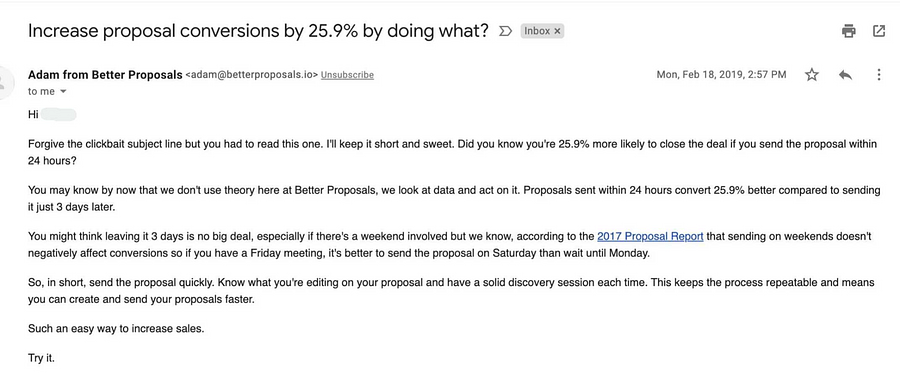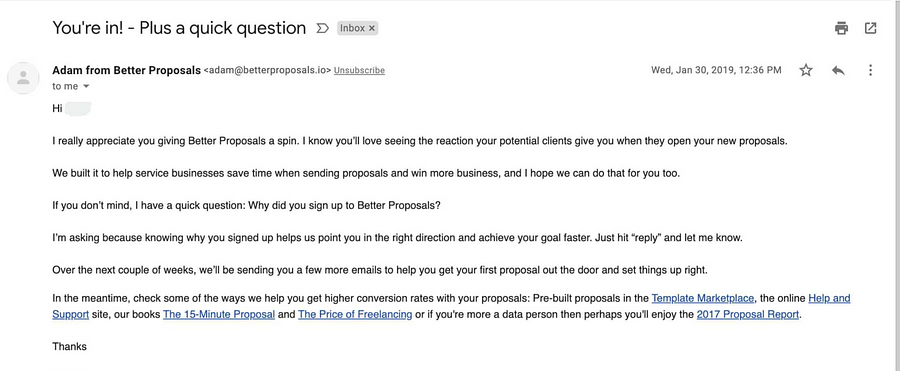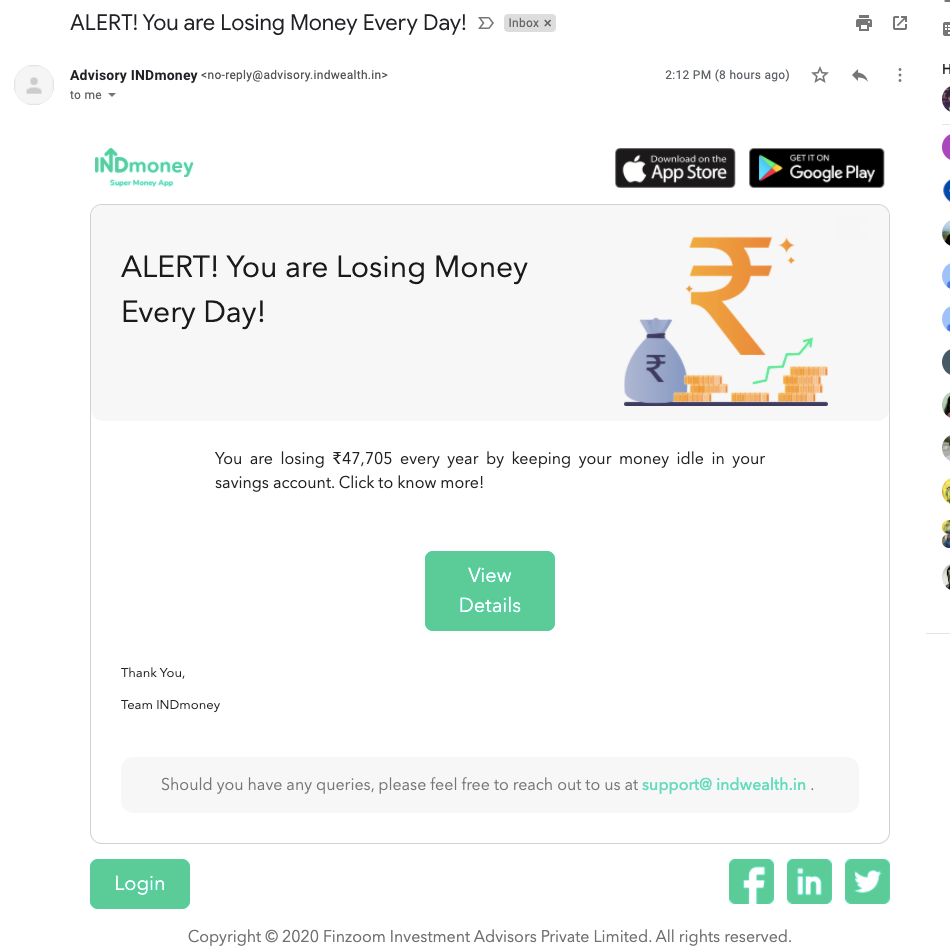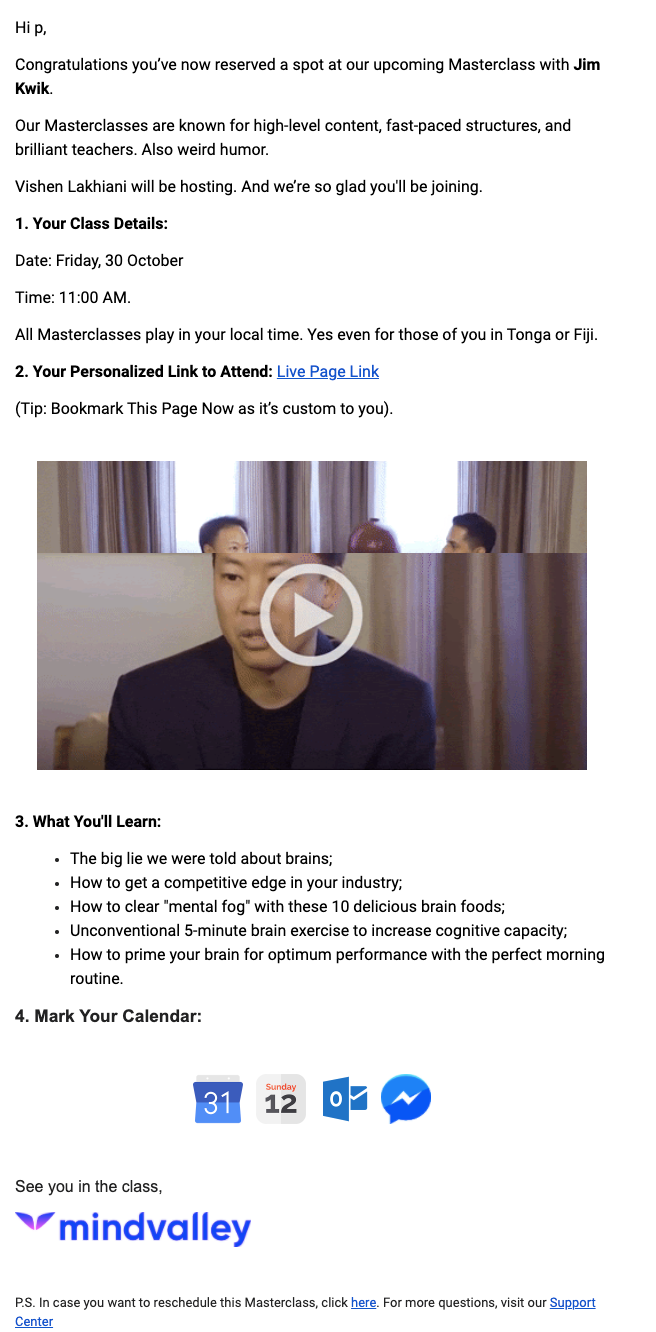
11 Email Marketing Types to Use in Your Sales Strategy
Customers today have a wide range of options for contacting your business. From social media, live chat, phone calls, SMS, and many others. However, email remains the most popular way for customers to interact with brands.
Besides marketing, email can be an amazing sales tool if you devote enough time to crafting the ideal email and sending it to the right target audience. Here are some ideas for great email marketing types, coming from our own experience and the experience of our customers.
Table of Contents
1. Product Update Emails
In our industry, product updates are crucial for keeping your customers in the loop. By keeping them familiar with what you’re working on, you’re making sure that your paid users take advantage of the new features and you’re giving your free users a slew of additional reason to sign up for a paid plan. However, things are not so simple.
Product update emails can be very technical in nature and generally, they’re not as engaging as other email marketing types. Moreover, there is the issue of frequency. We launch 2-3 new features or updates every month and technically, we could send a product update email every week. However, most companies don’t do that.
In our case, we wait and send a product update once in two or three months when we launch something really big that impacts all of our users and makes their lives much easier. You can send emails more frequently than that, but no more than once per month. For all of the reasons mentioned above, these emails can be an excellent way to convert free users to paid ones and for the paid users to upgrade their plans.
2. The Business Proposal Emails
Suppose that you already had a meeting with a prospective client and that they’re generally a fan of what you do or sell and they ask you for a business proposal. The emails where you send a business proposal are one of the most important in the sales process and you need to be very careful about them. Since you already have your foot through the door, it’s crucial not to lose the client at this point.
Make sure that the email is super short and to the point and don’t beat around the bush. Make it known that you’re sending a business proposal and that you’re expecting their answer. Our experience shows that it’s best to send these emails within the first 24 hours from your meeting if you want to maximize your chances of getting conversions.
Another thing that we suggest is not sending your proposals as attachments in your sales emails. Instead of sending your proposals in the form of PDF or MS-Word file attachments, consider using proposal software that allows you to send business proposals as a link to a proposal page. The goal of your business proposal email is to get customers to convert quickly and by adding attachments they need to download, print, sign and scan, you’re just adding more steps to the process and decreasing your chances of getting a sale.
3. Sales Prospecting Email
Once you have captured an inbound lead or inquiry, the next step is to convert that lead into a prospect. The latter is where sales prospecting emails come in. The purpose of prospecting emails is to initiate a two-way conversation, that starts off by qualifying for their fit and later nurturing them towards a close. To qualify your leads into prospects — you’ll be asking them questions, ideally over a call or an in-person meeting. Getting leads on calls and meetings isn’t easy. So you will have to take a consultative approach to your emails and make it worth their time to meet with you.
To pull this off — you’ll need sales prospecting tools and services that will enable you to gather data on your leads and conduct outreach. Consider leveraging the best sales enablement platform to streamline your efforts and maximize your results. Pairing your sales enablement platform with a meeting transcription app ensures that every client conversation is documented for better follow-ups and personalized outreach. With more data, you can understand them better and direct the conversations towards their problems and needs that can be solved with your products.
Hence your emails need to be highly personalized, addressing your lead’s specific pain points, and how you see your product potentially solving them. This can be accompanied with case studies and testimonials for social proof, making it easier for your leads to trust you and commit towards that meeting or call.
-jpeg.jpeg)
All great sales emails follow a specific pattern. The ideal sales email has an enticing subject line, a personalized opening line, a body that addresses your goals, a clear call to action (CTA), and ends with a simple signature. We created an infographic to explore this further and help your team improve their sales skills.
Let’s jump right in.
4. Transactional Email Marketing Types
As recipients, we tend to take transactional emails for granted, but they are crucial for your sales and customer success. These are emails that you send to your users automatically, after they sign up, purchase something, make a reservation, or do anything that requires a confirmation from your end.
A lot of brands take these emails for granted, but they’re an essential part of the sales process. By sending transactional emails, you have a chance to establish trust with your customers and show them that they’re dealing with a reputable brand. Keep the emails stupid simple, don’t go overboard with the design, and make sure that the subject line is very clear. Different industries require different types of transactional emails, but make sure to send one whenever you think a customer requires feedback from you.
5. Value Emails
Not every email you send has to be about increasing conversions and getting direct sales. Depending on your industry, the average sales cycle can be pretty long so you can’t even expect sales from a single email. Instead of being pushy in different email marketing types, try providing value instead and go slow and steady.

In our case, we gather data from our users over the course of the year based on their use of our product. We have different customers from a variety of industries and each year, we create a Proposal Report, where we teach our customers how to best use our product. We show them how to write a good proposal, how many pages it should have, when to send it, which days to send them on, etc. We back up all of our claims with statistics from our own research.
These emails always perform great because we provide value and ask for nothing in return. We just show our users what can be done and what steps they need to take to increase their sales. One subtle call to action at the bottom of the email is all it takes to get excellent conversions from these emails.
6. Welcome Emails
You only get one chance to tell someone you’re glad to have them as a customer. This is a subtype of transactional emails and you can get immense value from it. In our case, we welcome everyone who signs up for a free trial and offer them different resources to help them use our product better. However, we do one more extra thing.

In the welcome email, we ask each customer for the exact reason they signed up. All they have to do is respond to that email. Once they do that, they practically give us all the information we need to sell to them. We know which industry they’re from, why they need to use our product, what the most valuable features are for them and most importantly, we know if they’re a good lead or not. Based on the response to that email, the right sales rep sends a personalized email in return and we can get a conversation going pretty effortlessly.
7. Abandoned Cart Emails
This is not something we use in the SaaS industry, but nevertheless, it’s a type of email that you absolutely should consider if you sell any kind of product. There is one prerequisite - if you want to make these emails super effective, require all of your customers to register with their emails before ordering.
As much as 75% of customers will return to your store and finish their purchase if they receive an abandoned cart email at the right time. The good news is, you can play around with these emails and try to get as close to this percentage as possible.
8. Re-engagement Emails
Re-engagement emails are targeted towards people who haven't opened your emails in a while or haven't visited your website or app in a few days. You can decide how you define an inactive or dormant user. And according to that, you can see if you want to create an aggressive re-engagement email or a more subtle one.
For example, here is an email I got after not being active on the INDmoney app for a few weeks and after ignoring their subtle emails to get me back to the app.

People who engage with these emails might be still interested in your brand and are likely to generate immediate sales or become active users on your app.
9. Email Newsletters
Email newsletters are the most common form of emails to send to your subscribers. Email newsletters generally provide valuable content to the reader while subtly pitching a sale.
The aim of a newsletter can be to generate brand awareness, drive sessions to your website or blog post or build your authority in the industry.
Here is an example of a newsletter from Dribble.

It starts with introducing a popular designer & his story. The story provides some valuable insights into the design world. Then it ends by inviting people to join a workshop by that designer. The CTA is not aggressive but just says 'Learn More', without pressure to sign up, buy or enroll into anything.
If you want a deeper insight into newsletters, you should check out this guide about what is a newsletter & how can you create one.
10. Event Emails
Event emails, as the name suggests are there to inform or remind you about an event.
The focus of this email should be to give clear details, instructions & benefits of attending the event to the subscribers.
This is an example of an online event, a webinar, by Mindvalley.

The engagement you get on an event email will also show you how much your customers engage with you beyond just online mediums like email or social media.
11. Thank You Emails
Thank you email is sent after someone makes a purchase from your company. But don't just send a simple plain thank you email.
Inform customers what they bought, and how much they paid for it. If you can ease the objections in their mind by answering FAQ around refund policies, customer support, how to use, etc., those will add a lot of value to your thank you email.
You can also include the next steps they can take to start using your service. This will increase retention and possibly referrals.
Here is an example of a thank you email from Medium after you pay for the subscription.

Conclusion
Sending sales emails is an integral part of email marketing and the good news is, it’s not rocket science. There is a fairly limited number of emails that you can send, but the trick is in adjusting them to your product, service and target audience. Of course, the first place to get started is using a great piece of email marketing software, so consider giving SendX a try and see why 3,000 businesses in different industries trust SendX with their email marketing.
FAQs
1) What are some great email types in email marketing?
Some of the top email marketing types are, Product update emails, Business proposal emails, Sales prospecting emails, Transactional emails, Value emails, Welcome emails, and Abandoned Cart Emails.
2) What is the importance of Product update emails?
Product updates are crucial for keeping your customers in the loop. By keeping them familiar with what you’re working on, you’re making sure that your paid users take advantage of the new features and you’re giving your free users a slew of additional reason to sign up for a paid plan.
3) What is the purpose of sales prospecting emails?
The purpose of prospecting emails is to initiate a two-way conversation, that starts off by qualifying for their fit and later nurturing them towards a close. And your emails need to be highly personalized, addressing your lead’s specific pain points, and how you see your product potentially solving them.
4) What benefit will I receive from sending a welcome email?
In the welcome email, you would ask each customer for the exact reason they signed up. All they have to do is respond to that email. Once they do that, they practically give us all the information we need to sell to them. You will know which industry they’re from, why they need to use our product, what the most valuable features are for them and most importantly, you will know if they’re a good lead or not. Based on the response to that email, the right sales rep sends a personalized email in return and you can get a conversation going pretty effortlessly.


